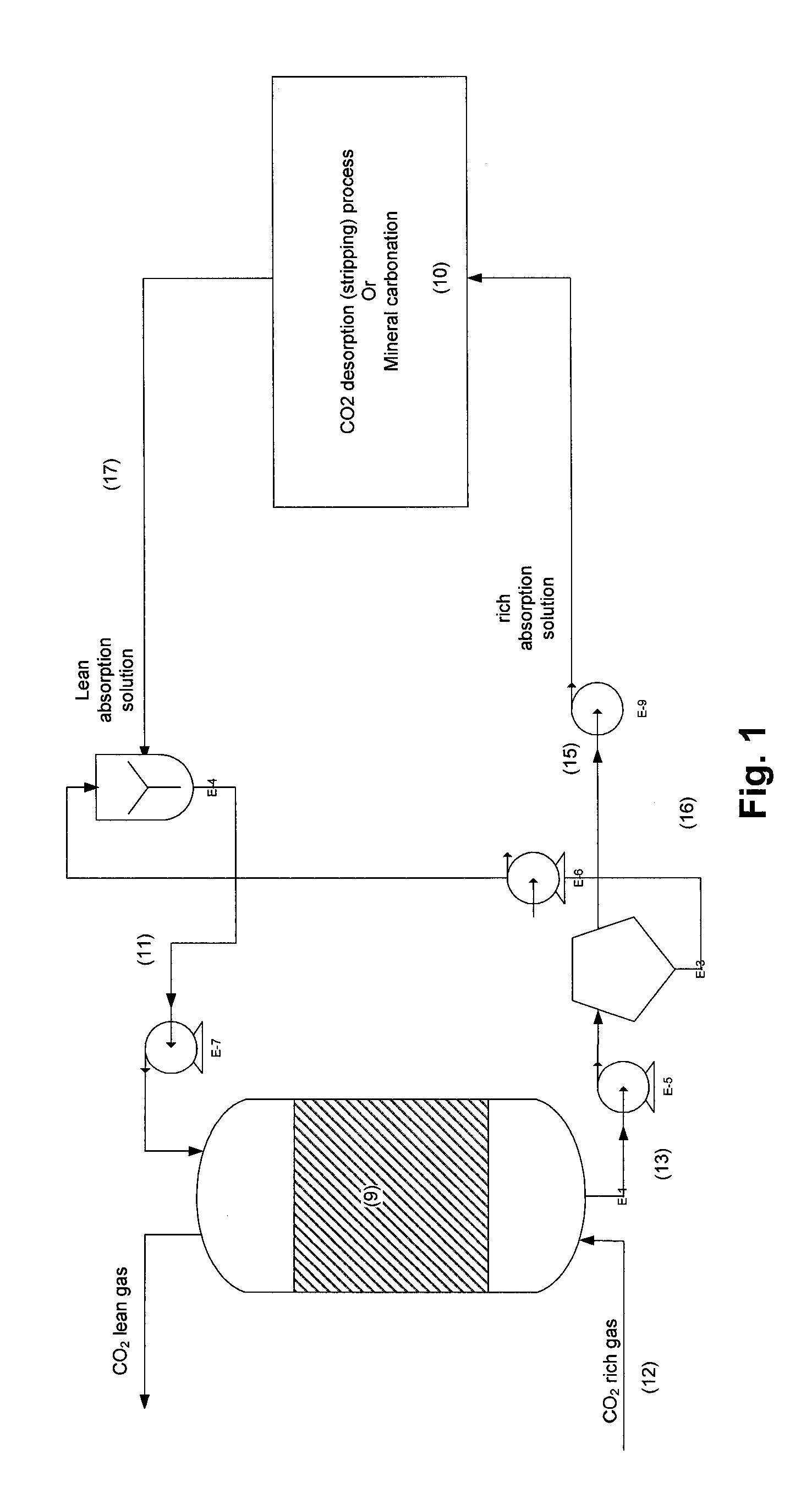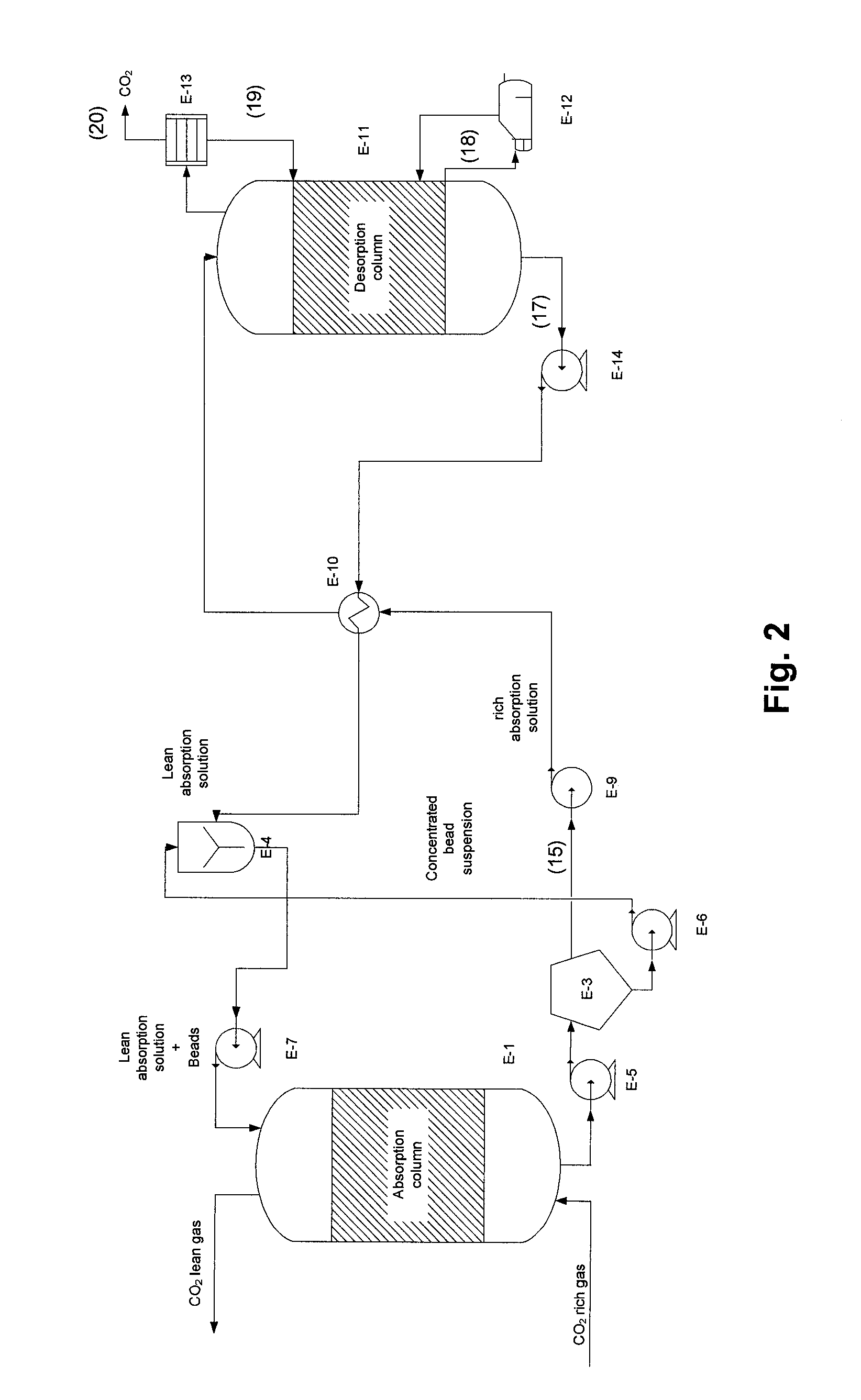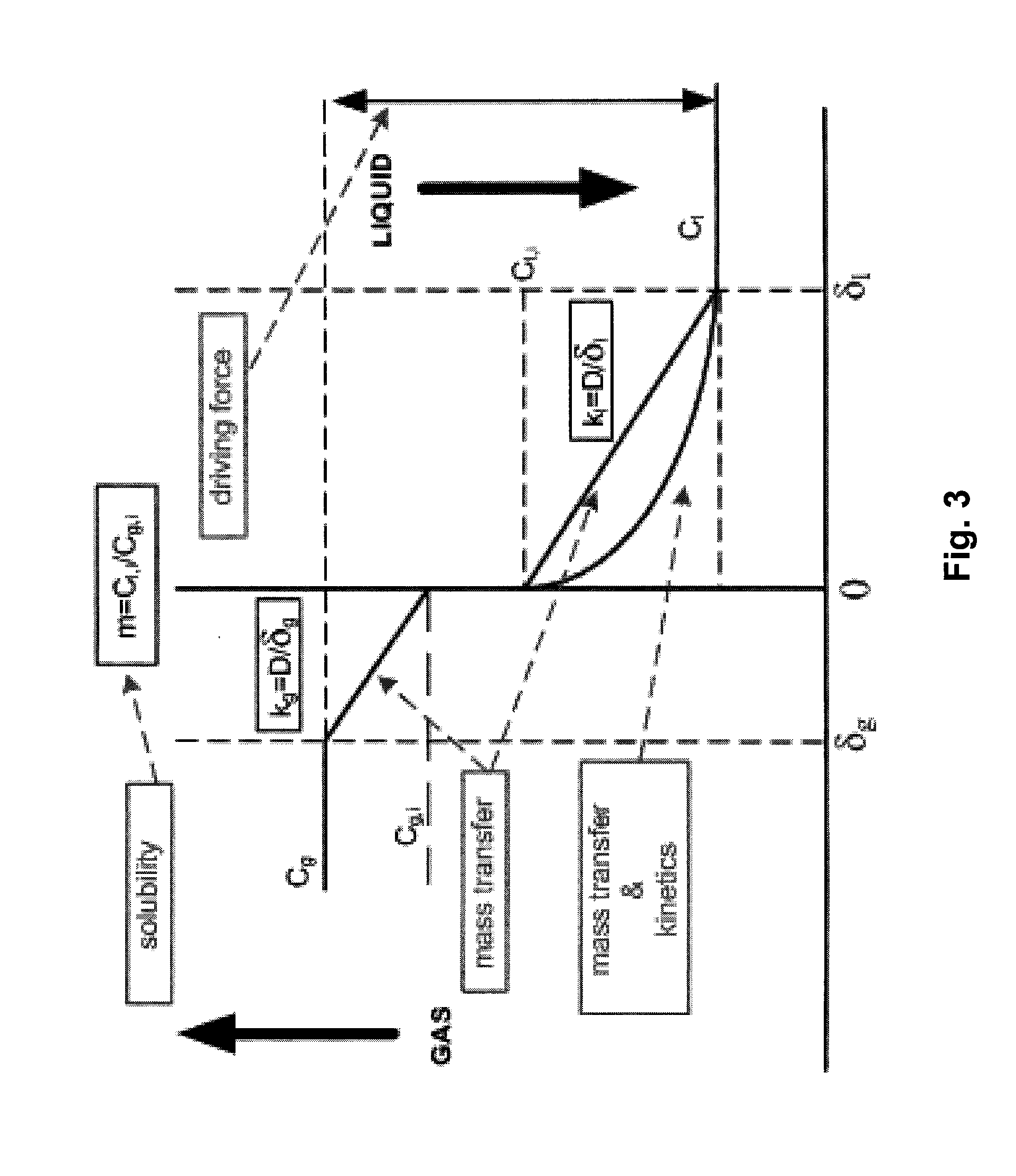Process for co2 capture using micro-particles comprising biocatalysts
- Summary
- Abstract
- Description
- Claims
- Application Information
AI Technical Summary
Benefits of technology
Problems solved by technology
Method used
Image
Examples
example 1
[0059]The micro-particle support material may be made of nylon, silica, silica gel, chitosan, polystyrene, polymethylmetacrylate, cellulose, magnetic particles, and other material known to be used for biocatalysts immobilization. The micro-particles may also be composed of a combination of different materials. For instance, the support may have a core composed of a material having different density or other properties compared to a different surface material which is provided for immobilization or entrapment of the enzymes. For example, the core of the support may be composed of a magnetic material to enable magnetic separation and the surface material may be polymeric such as nylon for supporting the enzyme. As noted above, in one embodiment the support material may be an aggregate of enzymes to form CLEA or CLEC. The micro-particles may each define an integral solid volume (e.g. a bead-like shape) or may comprise one or more apertures traversing the main volume of the particle (e....
example 2
[0061]An experiment was conducted in an absorption packed column. The absorption solution is an aqueous solution of methyldiethanolamine (MDEA) 4M. This absorption solution is contacted counter-currently with a gas phase with a CO2 concentration of 130,000 ppm. Liquid flow rate was 0.65 g / min and gas flow rate was 65 g / min corresponding to L / G of 10 (g / g). Gas and absorption solution were at room temperature. Operating pressure of the absorber was set at 1.4 psig. The column has a 7.5 cm diameter and a 50 cm height. Packing material is polymeric Raschig rings 0.25 inch. Three tests were performed: the first with no activator, the second with carbonic anhydrase immobilized to packing support and the third using carbonic anhydrase free in solution at a concentration of 0.5 g per liter of solution.
[0062]The results obtained showed that CO2 transfer rate or CO2 removal rate increased from 6 to 14 mmol CO2 / min with carbonic anhydrase immobilized onto the surface of Raschig rings. In the ...
example 3
[0064]To further determine the impact of enzymatic micro-particles on CO2 absorption rate, tests were conducted in a hydration cell. This hydration cell reactor was designed and operated at set conditions to control the area of the interface between a gas phase, CO2, and a liquid phase in an absorption process. This device was used to evaluate impact of enzymatic micro-particles on the CO2 absorption rate in a given absorption solution. Tests were conducted as follows: a known volume of the unloaded absorption solution is introduced in the reactor; then a known mass of micro-particles is added to the absorption solution (micro-particles may or may not contain enzyme); a CO2 stream is flowed through the head space of the reactor and agitation is started; pH of the solution is measured as a function of time; then pH values are converted into carbon concentration in g C / L using a carbon concentration-pH correlation previously determined for the absorption solution; absorption rates are...
PUM
| Property | Measurement | Unit |
|---|---|---|
| Fraction | aaaaa | aaaaa |
| Fraction | aaaaa | aaaaa |
| Thickness | aaaaa | aaaaa |
Abstract
Description
Claims
Application Information
 Login to View More
Login to View More - R&D
- Intellectual Property
- Life Sciences
- Materials
- Tech Scout
- Unparalleled Data Quality
- Higher Quality Content
- 60% Fewer Hallucinations
Browse by: Latest US Patents, China's latest patents, Technical Efficacy Thesaurus, Application Domain, Technology Topic, Popular Technical Reports.
© 2025 PatSnap. All rights reserved.Legal|Privacy policy|Modern Slavery Act Transparency Statement|Sitemap|About US| Contact US: help@patsnap.com



